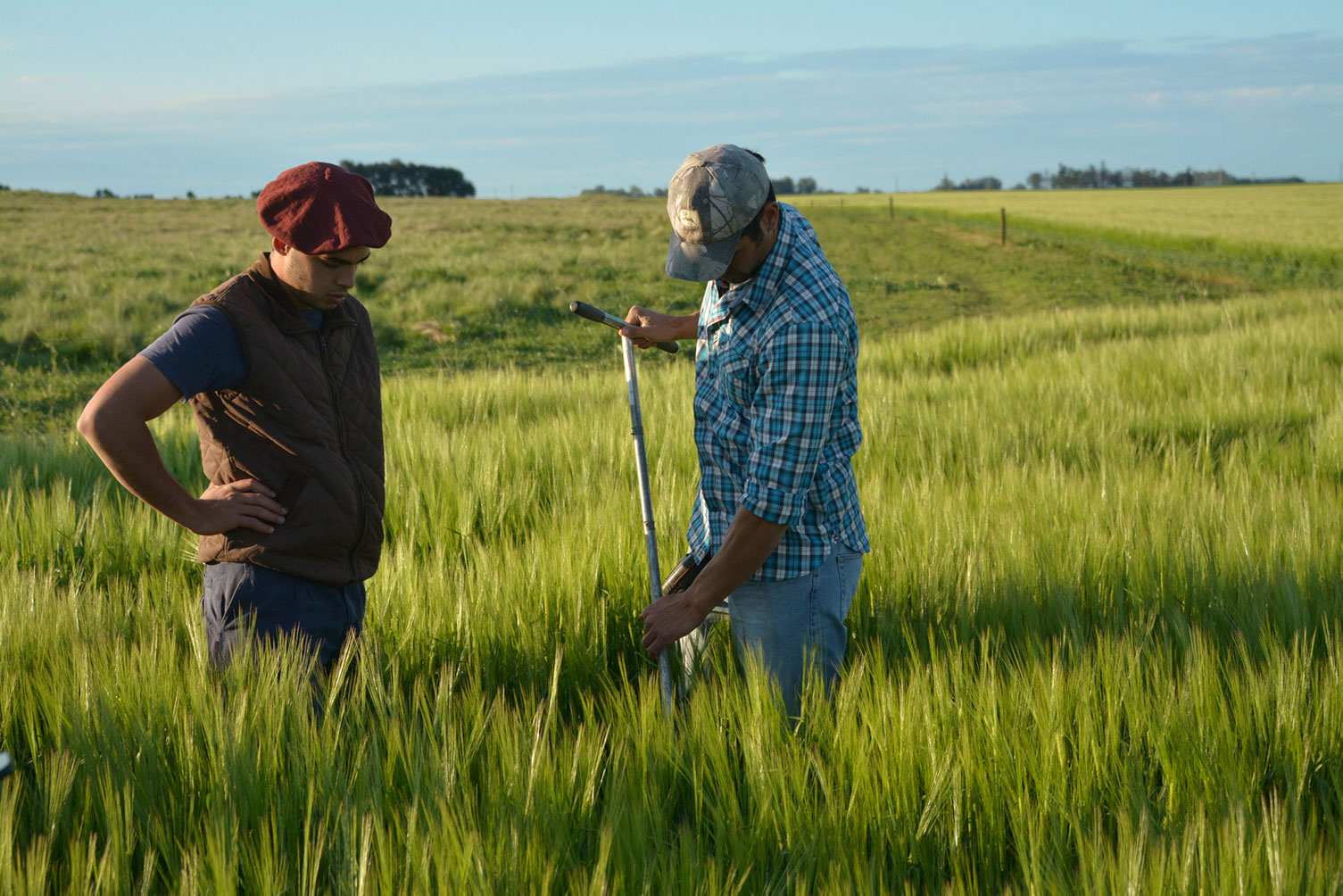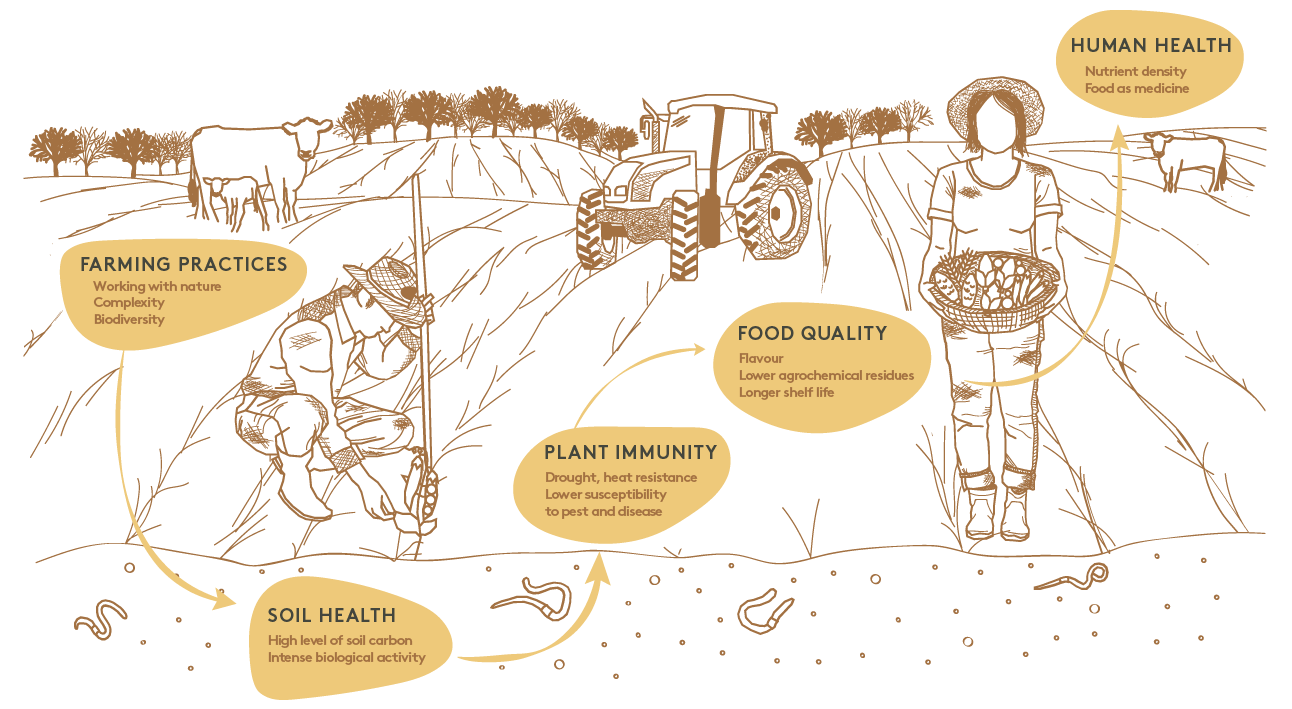Lo llamamos agricultura regenerativa
La agricultura regenerativa restaura la fertilidad natural de los agroecosistemas y captura más carbono del que emite. Produce alimentos ricos en nutrientes, agua limpia y abundante biodiversidad. Integra prácticas agroecológicas como la agricultura de conservación, la agricultura orgánica, la agroforestería, la permacultura y la gestión holística de la ganadería.
Los 5 principios fundamentales de la agricultura regenerativa
Reducir insumos sintéticos
El uso de insumos sintéticos debe minimizarse y reemplazarse gradualmente por fertilizantes orgánicos y biopesticidas. A largo plazo, los fertilizantes artificiales causan un desequilibrio de nutrientes en el suelo y dependencia de los cultivos, mientras que los pesticidas sintéticos reducen las poblaciones de insectos beneficiosos y bacterias y hongos simbióticos del suelo. Los fertilizantes orgánicos, como el estiércol, el compost y los biofertilizantes, proporcionan materia orgánica de manera natural, potenciando la fertilidad del suelo y el desarrollo de los cultivos. Esto favorece la vida del suelo y ayuda a restaurar su estructura.
Minimizar la alteración del suelo
La labranza profunda y el arado generan un movimiento excesivo del suelo, alterando su estructura natural y provocando problemas como la compactación del suelo, la erosión y la pérdida de capacidad de retención de agua. Las prácticas de labranza mínima (superficial) y siembra directa ayudan a evitar el volteo y la alteración del mismo. Como resultado, la vida en el suelo (especialmente los lombrices) puede prosperar.
Maximizar la cobertura del suelo
En la naturaleza, los suelos están permanentemente cubiertos por plantas vivas. Esta es la función intrínseca de un suelo saludable, cuyo desarrollo y rendimiento son posibles gracias a la simbiosis natural entre el suelo, los microorganismos y las plantas. Las prácticas agrícolas que dejan los suelos desnudos durante varios meses van en contra de estos principios naturales.
Los cultivos de cobertura (sembrados entre los cultivos comerciales de temporada) ayudan a mantener y mejorar la estructura del suelo con su sistema de raíces. Además, los cultivos de cobertura reciclan nutrientes y acumulan materia orgánica que se liberará gradualmente para los cultivos comerciales siguientes.
Aumentar la diversidad de plantas
La diversidad y complejidad son la base de los agroecosistemas resilientes. Por el contrario, los sistemas agrícolas de monocultivo rápidamente se vuelven frágiles, perdiendo eficiencia y rentabilidad con el tiempo. Al diversificar la rotación de cultivos, aumenta la resistencia de los cultivos a plagas y enfermedades, se mejora la estructura del suelo y, a su vez, la capacidad de retención de agua del suelo. Nos gusta hacer hincapié en la importancia de la diversidad en el espacio: cultivos asociados o cultivos en compañía con diferentes profundidades de raíces y biomasa aérea; y la diversidad en el tiempo: sucesión de cultivos comerciales, cultivos de cobertura y pasturas temporales.
Integrar la ganadería y desarrollar la agroforestería
Los sistemas agrícolas excesivamente especializados llevan a la separación de la ganadería y los cultivos, lo que resulta en la pérdida de la valiosa interacción entre materia orgánica, minerales y vida biológica del suelo. Los animales son una parte integral de un ecosistema saludable y equilibrado, y la (re)introducción de pastores, junto con pastizales semi-perennes y pasturas, es considerada una de las prácticas más valiosas en la agricultura regenerativa.
Paralelamente, los árboles también desempeñan un papel esencial en los ecosistemas agrícolas. Además de su función productiva (frutos, madera, etc.), los árboles, a través de su sistema de raíces profundas, reciclan nutrientes y almacenan carbono, mientras que, sobre el suelo, protegen los cultivos y animales de los elementos. La agroforestería es, por lo tanto, una forma particularmente útil de aumentar la estabilidad y resiliencia de un campo.






